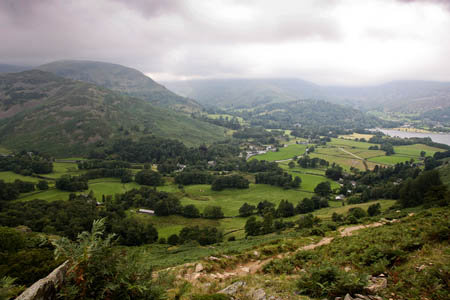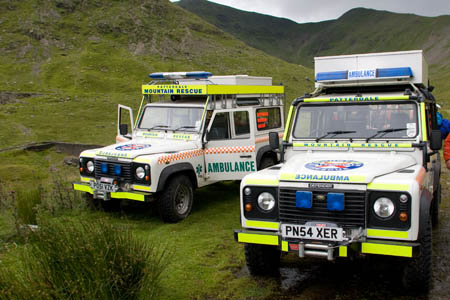A Lake District mountain rescue team is looking for members of the public to join the search for a missing walker.
But they won’t need to pull on their boots and waterproofs; the search will be conducted with a computer and mouse.
Outdoor fans are invited to take part in the trial search for the missing walker, who will be ‘planted’ somewhere in the Patterdale area and a high-tech unmanned drone will relay pictures of the search area as it flies over the Lakeland countryside.
Patterdale Mountain Rescue Tea is working with the University of Central Lancashire to test the system.
Because the search will produce so many images – up to 100 a minute – the rescue team is asking the public to scrutinise the pictures to see if they can spot the missing person.
The live drone test will take place on Thursday 25 July and will use the Preston-based university’s AeroSee unmanned aerial vehicle and the crowd-sourced search.
The research will try to ascertain if the system could be used to save lives in mountain rescue searches.
The images from the search can be viewed on desktop, laptop and tablet computers and mobile devices.
A UCLan spokesperson said images from the drone will be relayed to anyone logged onto the AeroSee web application.
“As images are streamed to people’s computers, tablets and mobiles they will be able to tap or click on any area of the image, creating a ‘tag’, where they think they may have spotted an injured person on the mountainside,” the spokesperson said.
The crowd-sourced intelligence, which includes visual references and GPS location data, will be relayed to Patterdale team members back at their base who will be able to assess the image, and send the AeroSee back to take a closer look if they believe ‘crowd’ participants have identified a person in trouble on the hills.
Data provided by members of the public participating in the rescue operation will help the mountain rescue team target their search more effectively, saving them time and enabling them to head straight to the injured person.
Mike Blakey, team leader of Patterdale MRT, said: “Mountain rescue is changing as new technology is available, from GPS and mobile phones for people visiting the hills to the Sarcall system that enables us to work more effectively with other emergency services.
“Drones may be really useful in some scenarios and the idea of getting people to help with the rescue operation wherever they are in the world is a really interesting idea that taps into all the social media ways that people are using digital technology today.
“Doing it like this ensures it is done safely and sensibly and it’ll be fascinating to see how Thursday’s trial and demonstration works out.
“We’re hoping for good weather on the day. The real test would be our usual conditions: out at night or in atrocious weather searching for missing people.”
Darren Ansell, space and aerospace engineering lead at UCLan, said: “The cost of this technology has come down and down in recent years which makes operations like this one economically viable.
“We also know how quickly AeroSee can cover a geographic area that might take a team a number of hours to search. Speeding up the rescue operation can be critical particularly when injuries are severe or the weather conditions are poor.
“If it can improve the focus on key areas, AeroSee also has the potential to reduce the risks for volunteer rescuers in dangerous conditions.”
Paul Egglestone, director of the Media Innovation Studio said: “Drones get lots of bad press as they’re usually associated with civilian causalities in military theatres.
“They’re just a tool and we’re using AeroSee for peaceful purposes. And the unique thing about our approach is that we’re inviting civic minded people to give up 20 minutes of their time to help save a life on the mountainside.
“It turns the whole drone debate on its head and encourages people to participate wherever they are using digital technology to do it.”
Anyone interested in joining the AeroSee search and rescue trial needs to create a user account online by following the instructions on its website.
Participants can also reach this via the Patterdale MRT website.
Before the operation goes live they will receive a text message inviting them to log on to the AeroSee site where they will be able to participate in a live trial, tagging images wherever they see anything that looks like a person in distress on the hillside.


Pauline Badger MSc
16 July 2013I have done that and doing that as to the use of internet technology so count me in.